Confronting Uncertain Times
The watch industry is facing many challenges, reveals the latest Deloitte Swiss Watch Industry Study of 2015. The report, now in its fourth year, surveyed watch executives and consumers in major markets for their take on the business. While there was a lot of negative to go around, the bright spot was the U.S. market.
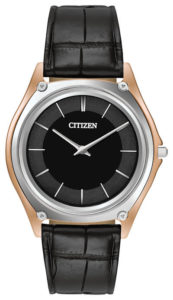 Among the mitigating factors, says Deloitte, include the strong Swiss Franc (appreciated in value by 15% to 20%); weaker foreign demand, especially in Hong Kong and China; competition from the smartwatch; and the need for greater focus on online sales channels and digital media marketing campaigns.
Among the mitigating factors, says Deloitte, include the strong Swiss Franc (appreciated in value by 15% to 20%); weaker foreign demand, especially in Hong Kong and China; competition from the smartwatch; and the need for greater focus on online sales channels and digital media marketing campaigns.
But the U.S. market continues to grow, confirming its position as one of the most consistent markets over the past two years, says Deloitte: “Optimism about the U.S. market is at a record high, 91% of watch executives now have a positive growth outlook, compared to 75% in 2014. This makes the US the most highly-rated market…Thanks to its fast recovery from recession, the U.S. economy is strong and consumer spending has increased sharply in the past few years.”
Trend Watching
Watch trends revealed, at the most influential watch fair Baselworld in March, show a return to classic styling in contemporary designs that are thinner with clean, simple lines. Many leading watch brands are revisiting their archives to reinvent popular models. Sporty and fashion-forward are the buzzwords, with lots of brands howling for moon phase, and color proving to be a key design element.
“In men’s and ladies’ watches, the trend is definitely toward classics and line extensions, given the uncertainty in major markets and a glut in inventory,” reports veteran watch journalist Carol Besler, watchdetail.com. But she notes that there is always a twist, with greater use of gemstones in ladies’ watches and lots of curious twists and showpieces, usually in limited editions for men.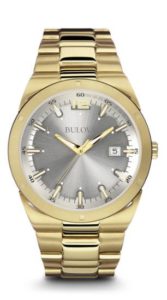
While classic reigns supreme, fashion is important for both men and women as many watch brands are including more colorful options in dials and straps, bold gold elements, and sporty chic motifs with a hint of glamour, reports veteran watch columnist Roberta Naas, thewatchblog.com. She cites some brands offering his-and-her combinations and unisex styling.
Wear Thin
Popular styles for men are elegant, simple and sleek, describes Alan Grunwald, president of Belair Time Corporation, a Lakewood, New Jersey based private label watch manufacturer. “Last year the trend was larger and thicker, with lots of sub-dial treatments. This year we notice that thin is in again.”
Concurs Samantha Barker, public relations and social media coordinator for Citizen Watch Company of America, New York City: “Nobody wants a big bulky watch on their wrist all day and night. Similarly to seeing smaller timepieces for women, we’re seeing thinner watches for men.” Answering the call for this major trend Citizen launched the world’s thinnest light powered analogue quartz watch.
Bulova also launched new slim styles including the world’s first curved chronograph, CURV, in dress and sport models for men, says Thierry Casias, creative director for the New York City-based brand. Seiko, too, launched its first tourbillion in its high-end Credor brand Presage collection, based on its ultra-thin mechanical movement, with only eight pieces made for select Seiko boutiques.
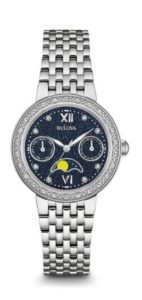 Lady Killer
Lady Killer
While the trend for ladies’ boyfriend watches never seems to go out of style (with gunmetal and rose gold popular in its Caravelle collection), smaller cases are also in for women, says Casias, citing Bulova’s slim cases for ladies in its diamond collection, with soft contours and ergonomic designs. He notes moon phase watches a trend for ladies, too.
According to Barker ladies watch trends are moving from the large sized models to smaller, more elegant ones. “We would describe these as more jewelry pieces. They are great for layering with other accessories like our Silhouette Bangle or Silhouette Crystal collections.” Seiko also launched smaller, jewelry-inspired solar watches in its Tressia collection, with styles featuring diamonds on the bezel, mother-of-pearl dials, and petite links in architectural patterned bracelets.
Grunwald notes that color is key: “We’re using combinations of vivid color treatments and crystals. Blue is especially popular in straps and dials.”
Jewelry/watch blogger Barbara Palumbo of adornmentality.com launched a new blog whatsonherwrist.com dedicated to women and watches, hails 2016 Year of the Woman, as brands are paying more attention to this untapped market. She says marketing watches to self-purchasing women now would give jewelers a jump on what may likely be a mass marketing campaign. “Showing the world what’s on her wrist today could very well be the right hand ring of yesterday.”
Smart Tech
Although 25% of watch executives surveyed by Deloitte consider smartwatches to be a competitive threat, up from 11% in 2014, many consider it an entirely different market and believe it will bring more customers to classic watches.
“The smartwatch phenomenon is bringing new young watch consumers into the segment that will move on to real watches next,” says Besler. “Every Apple watch looks like every other one, with subtle options, and even the biggest Apple fans will want something else for their wrists. Fortunately there’s a lot to choose from. If I were a retailer, I’d offer an Apple watch trade-in program!”
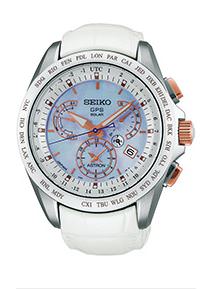
Grunwald notes a big upswing in classic watch sales during the first quarter of 2016. “There’s no question smartwatches are no longer a fad. But no matter how functional smartwatches are, they always leave something to be desired in styling. We continue to focus on fashion forward designs and unique finishes that smartwatches can never compete with.”
Shinji Hattori, president and CEO of Seiko Watch Corporation, explained: “Our sales of mechanical, solar and GPS watches are unaffected by these converging technologies trend, and I believe this will remain so. Seiko’s experience is that the traditional watch market is very resilient. In the next five years, traditional watches with exceptional added-value will do well.”
What is evident is that the competition from smartwatches is fueling new product innovation. Deloitte’s biggest business strategy trend this year is the introduction of new watch products it deems “likely related to the fact that a quarter of surveyed watch companies expect smartwatches to be a growing threat.”
Successful Sales
Gary Girdvainis, publisher of WristWatch and AboutTime magazines advises jewelers curate a mix of cornerstone brands and cool lesser-known names to develop a selection unique to their local market. “Mingle brands that are not so similar in different categories, and offer a range of prices. Avoid brands that are all over the Internet. Amazon is the death knell for any brand.”
Besler advises jewelers to build on their brand relationships for in-store events, co-op advertising, and sponsorships. “Also, use your website like a magazine rather than a catalog and hire professional writers. Fresh content is key!”
Michael Benavente, executive vice president of sales for Bulova emphasizes the need for jewelers to take the same “omnichannel” approach that the big national accounts have embraced. “Wherever the consumer is shopping is how they need to approach their business—mobile, web or brick we must all continually evolve.”
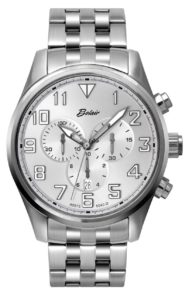
To combat price shopping and Internet competition, Grunwald advocates jewelers consider private label. “It allows jewelers to put their own store name or brand on the watches and end the story for Internet competition. You can start with as few as a dozen watches to enjoy the prestige and exclusivity private branding can offer!”
Benavente hails the top advantage that local jewelers have over other retail outlets is personalized service. “Stay close to your customers, service them and cultivate them across generations. Good, better, best product offerings are key to servicing your entire customer base. Jewelers using this approach are thriving.”










